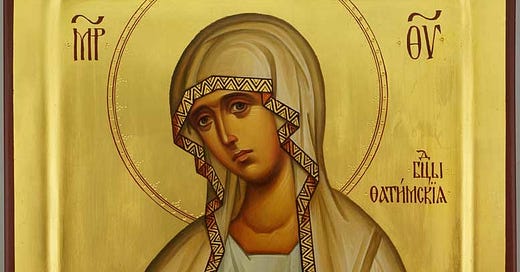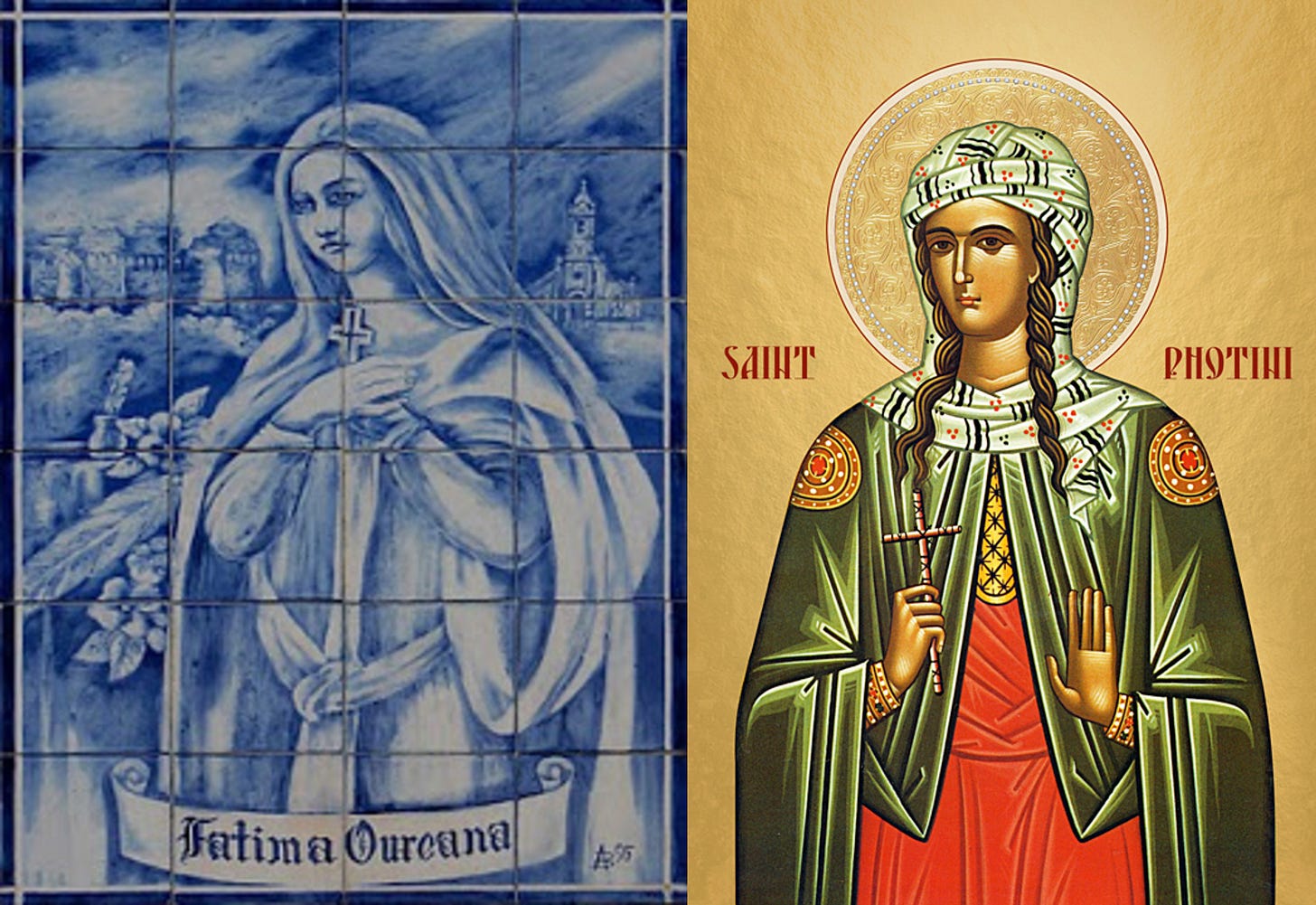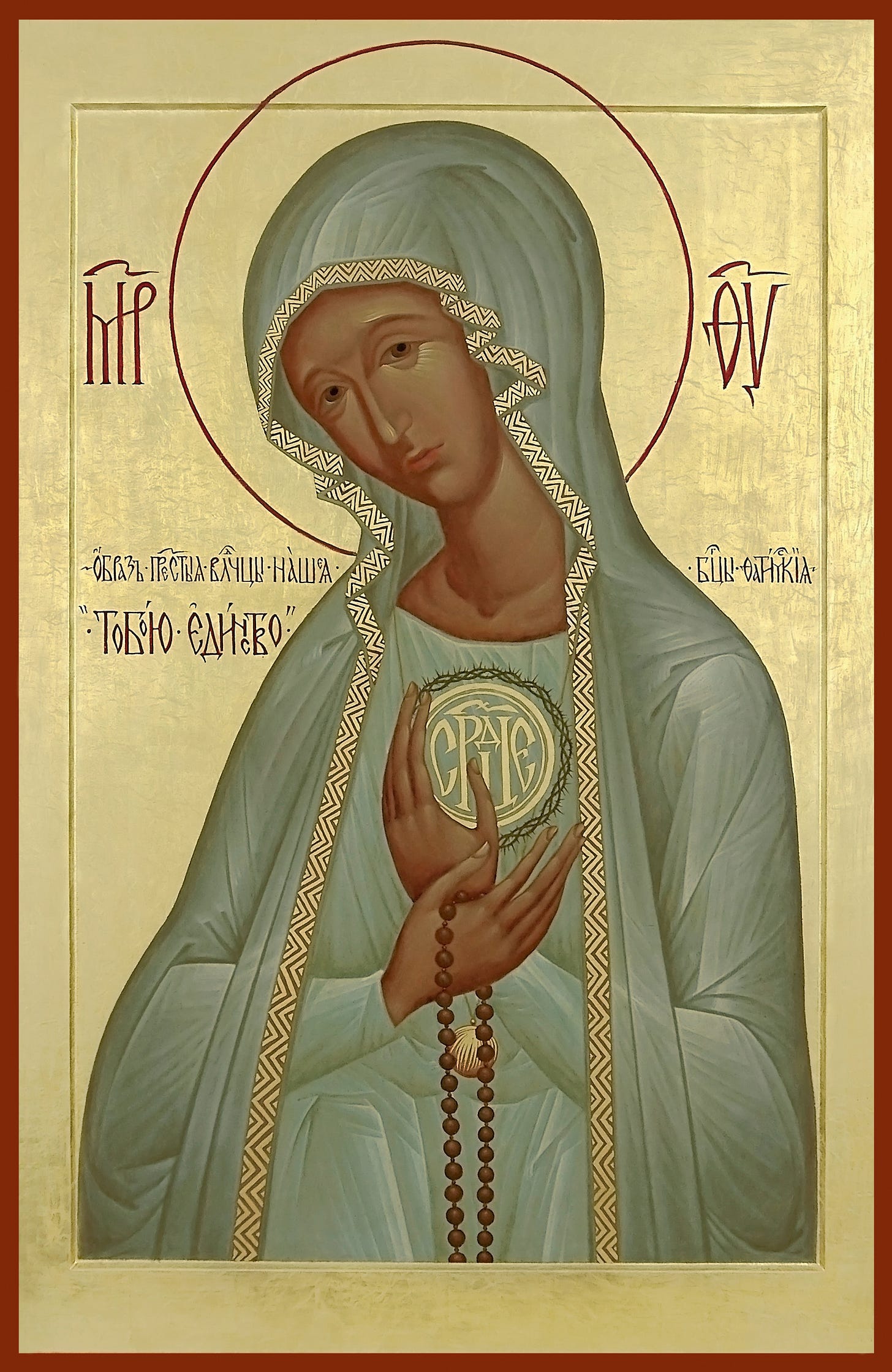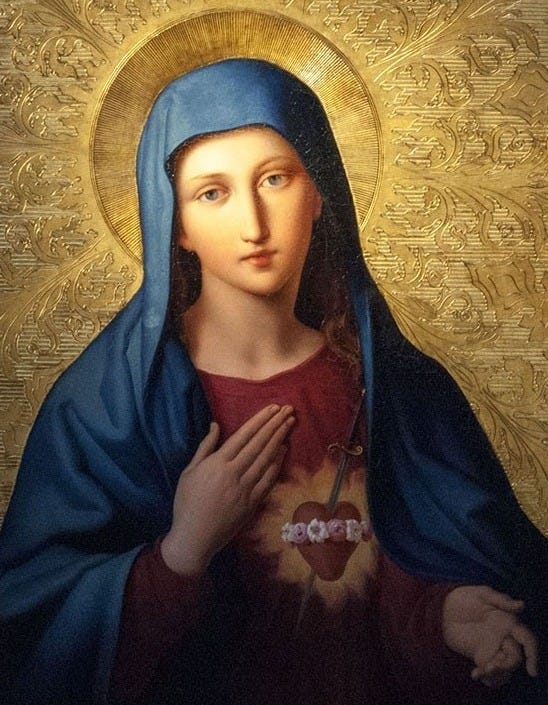According to tradition, the Samaritan woman whom the Lord Jesus met at Jacob’s well was named Photini. Although there’s no direct etymological link between the names Photini and Fatima, there are some parallels worth considering.
The name Fatima was popularized because she was the daughter of the false prophet Mohammad. Her name literally translates to, “she who abstains,” however, Islamic tradition came to give her the title, al-Zahra, which translates to, “the shining one,” a meaning that’s been intimately connected to the name Fatima ever since. While we certainly couldn’t consider Mohammad’s daughter to have been radiant with divine light and knowledge, since she adhered to the false religion of Islam her entire life, there’s a reason why Fatima, Portugal bears her name. According to tradition, there was a Moorish princess in the 12th century named Fatima who converted to Christianity during the Reconquista of the Iberian Peninsula. This Fatima, who took the baptismal name Oureana, truly lived up to her title of “the shining one” or “the radiant one” by embracing the true knowledge of God found in Jesus Christ alone. Her conversion even began on “the night of Saint John and the Celebration of Lights” when she met her Christian husband.1 Since this Fatima’s soul truly was radiant with divine grace and truth, the Catholic city in Portugal was named after her.
All of this is reminiscent of another woman whose name means “the shining one” or “the radiant one,” St. Photini. Like Fatima Oureana, Photini initially didn’t live up to her name. As a Samaritan, she knew the true God, but didn’t worship Him “in spirit and truth” (Jn 4:22-23), and so couldn’t be said to have radiated with divine light. However, that changed when she encountered Jesus, placed her faith in Him, and became one of His first non-apostolic disciples and missionaries (Jn 4:39-42). The tradition tells us that St. Photini radiated with the light of divine grace for the rest of her life, heroically going to martyrdom under the reign of Emperor Nero.2 Like Fatima, Photini is a woman who once only knew of the true God, but then, by His grace, came to truly know Him in the person of His Son. Once again, while there isn’t an etymological link between the names Photini and Fatima, these parallels strongly suggest that the two women are associated in the order of Providence.
The reason I bring up these connections is because, in the year of our Lord 1917, another woman who’s radiant with divine light appeared in the city of Fatima—the Blessed Virgin Mary. Prima facie, there’s an obvious connection between our Lady of Fatima and the radiant light associated with the names Fatima and Photini, namely, the Miracle of the Sun. Since our Lady is the “woman clothed with the sun” (Rev 12:1), she is the true Fatima, the true Photini, the one who shines with the light of the eternal Son, a reality symbolized by the Miracle of the Sun.3 However, an even more striking connection between Fatima and Photini is revealed when we recall one of the most important things that our Lady of Fatima expressed to Sr. Lucia, St. Francisco, and St. Jacinta: her desire for the Eastern Orthodox country of Russia to be consecrated to her Immaculate Heart, and thereby be reunited with the Holy Father in Rome.4 This is significant because on the day of her first appearance, May 13th, 1917, the Russian Orthodox Church celebrated the feast of St. Photini.5
Consider that, as a Samaritan, St. Photini was in an odd covenantal situation. She wasn’t a Jew, however, she also wasn’t a Gentile. The Lord Jesus had this to say about her: “You [Samaritans] worship what you do not know; we worship what we know, for salvation is from the Jews” (Jn 4:22). The fact that our Lady appeared in a Catholic city likely connected to the woman to whom this was said, on the Eastern Orthodox feast day of this same woman, to eventually speak about Catholic-Orthodox relations, is very striking to say the least. Could this have providentially revealed something about the Catholic-Orthodox schism? Perhaps that it’s analogous to the Jewish-Samaritan schism under the old covenant? Indeed, St. Robert Bellarmine, observing that the fall of Constantinople happened shortly after the Eastern Orthodox rejected the reunion Council of Florence, commented that “many compare the Greek Church to the Kingdom of Samaria, which separated itself from the true temple, and in the end was led away into perpetual captivity.”6

Moreover, consider just how fitting it was for our Blessed Mother to use the miracles of Fatima to reach out to the Russian people in particular. Although Eastern Orthodoxy is the largest religion in Russia, Islam is the second largest. Not only this, but both Orthodoxy and Islam hold the Virgin Mary in high regard, albeit in deficient ways. The Muslims believe that Jesus was a prophet and that His Mother lived a holy life, but they impiously deny that our Lady is the Mother of God, since they reject the divinity of our Lord Jesus Christ. By appearing in a city that was named after a Muslim convert to Christianity, whose namesake was the daughter of the false prophet Mohammad himself, Mary was showing all Muslims, especially those in Russia, that she’s the radiant one, not Fatima. She’s the woman who is to be their Mother, because Jesus is their Lord and God.
When it comes to the Russian Orthodox, they’re obviously in a very different position than the Muslims. They’re Christians who joyfully embrace the divinity of Jesus, as well as the identity of our Lady as Theotokos, the Mother of God. Interestingly, the Russian Orthodox in particular also have a fascinating history of accepting the doctrine of Mary’s Immaculate Conception, if not officially, at least popularly. The Russian Saint Demetrius of Rostov, for example, not only taught that our Lady was immaculately conceived, but he even belonged to a confraternity called the “Brotherhood of the Immaculate Conception.”7 Indeed, as Fr. Lev Gillet points out,8 in the 17th century, much of “the Academy of Kiev, with Peter Moghila, Stephen Gavorsky and many others, taught the Immaculate Conception in terms of Latin theology.” In the year 1667, a Council in Moscow even “approved Simeon Polotsky’s book called The Rod of Direction, in which he said: ‘Mary was exempt from original sin from the moment of her conception.’” The Russian Old Believers, a sect that broke away from the mainstream Russian Orthodox Church in the 17th century, likewise affirmed that Mary “had no share in original sin” well into the 19th century.9
Unfortunately, under influence from the Greek Orthodox Church, Russian Orthodox Christians slowly began to abandon their belief in Mary’s Immaculate Conception in the 18th and 19th century. As Gillet observes, it wasn’t until 1884 that the Holy Synod of Moscow officially repudiated the Immaculate Conception, likely in reaction to Pope Bl. Pius IX’s dogmatic definition of the doctrine in Ineffabilis Deus.10 With this in mind, it’s even more striking that our Lady of Fatima expressed her desire for Russia in particular to be consecrated to her Immaculate Heart, and asked us to make reparation for blasphemies committed against her, which includes blasphemies against the Immaculate Conception.11 Perhaps our Lady has a special place in her Immaculate Heart for the Russian people because, historically, they’ve had a special place in their hearts for her and her Immaculate Conception.
Indeed, a friend of mine who specializes in liturgical studies has informed me of a few more “Russian coincidences” associated with the miracle of Fatima. On August 13th, 1917, the day the children of Fatima were supposed to receive another vision from our Lady but instead were thrown into jail, the Russian Church was about to begin the fast for the Dormition of the Mother of God; on September 13th, 1917, the day of the Virgin Mary’s fifth appearance, the Russian Church celebrated the Feast of the Sash of the Mother of God; and on October 13th, 1917, the day on which the predicted Miracle of the Sun actually occurred, the Russian Church was holding vigil for the Feast of the Protection of the Mother of God, which was celebrated the following day on October 14th. Strikingly, the Feast of the Protection is one of the only Eastern Marian feasts that commemorates a public appearance of our Lady. Given the timezone difference between Russia and Portugal, this means that, during the actual public miracle of the Theotokos in Fatima, Russian Christians were, at that exact time, holding vigil in honor of her miraculous appearance in 10th century Blachernae.
Thus, in addition to the appearances of our Lady of Fatima coinciding with the Russian feast of St. Photini, and significant political upheaval in 1917 Russia,12 it seems that these miracles also liturgically lined up with Russian Orthodoxy’s own Marian devotion. Once again, one can’t help but wonder if all of these “coincidences” were intended to bring Russian Orthodox Christians back into the loving arms of the Immaculate Virgin Mary, something that can only be done once they re-enter full communion with Catholic Church and her visible head, the Roman Pontiff. Our Lady was inviting Russian Christians to return to their traditional belief in the Immaculate Conception, and their traditional unity with the Church of Rome.
Although I wouldn’t want to put too much emphasis on private revelation, much less my interpretation of it, it’s hard for me to dismiss these connections as mere coincidences. I think we truly have an example of extraordinary divine Providence on our hands, demonstrating that God indeed still speaks to us in miraculous ways. Our Lady of Fatima, pray for us! Immaculate Heart of Mary, pray for us! Lord Jesus Christ, Son of God, have mercy on us!
“The Legend of the Princess Fatima,” translated by Eric T. Pratt.
Orthodox Church in America, “Martyr Photini the Samaritan Woman, her sons, and those with them.”
Indeed, as I’ve noted before, the moon is a created image of our Lady. Rachel, whose fulfillment is Mary, was symbolized by the moon in Joseph’s dream (Gen 37:9-10), and this imagery is picked up in Revelation 12:1 when Mary is seen “with the moon under her feet.” Like the celestial moon, our Blessed Mother, the heavenly moon, reflects and radiates the light of the sun, her Son. It’s fitting, then, that she chose to perform a miracle related to the sun in a city that’s symbolically connected to the radiance of divine light.
See America Needs Fatima, “The Apparitions of Our Lady of Fatima.”
See, “Orthodox calendar 1917.”
St. Robert Bellarmine, Disputationes de Controversiis Christianae Fidei, vol. 1, De Christo, Book 2, Chap. 30.
See Alex Roman, “The Immaculate Conception of the Mother of God in Both East and West.”
The following information is from Fr. Lev Gillet’s article, “The Immaculate Conception and the Orthodox Church.”
For more on the Old Believers and the Immaculate Conception, see Vitalis Varaioun, “Thou hast rauished my heart, with one of thine eyes, with one chaine of thy necke.”
I’m aware that the Confession of Dositheus rejected the Immaculate Conception in 1672, however, the Russian Orthodox Church never officially accepted all of its teachings as dogmatically binding.
See America Needs Fatima, “The Five First Saturdays Devotion.”
See James Foley, “Lenin, Fatima and Holy Week.”








It’s quite fascinating that Portugal was founded by Dom Afonso Henriques after a battle against five Muslim kings-a victory he claimed was inspired by a vision of Christ Himself, who promised him success and the creation of Portugal as a stronghold of Christianity. Sound familiar? It should-this story closely echoes the famous Battle of the Milvian Bridge, where Constantine defeated Maxentius after seeing a divine sign. In this light, Dom Afonso Henriques can be seen as a kind of new Constantine; Portuguese is like the new Latin-actually the closest living language to Latin-and Portugal takes on a role similar to that of ancient Rome. The five Muslim kings represent a new Maxentius, and the Battle of Ourique becomes Portugal’s Milvian Bridge.
What’s even more interesting is that Portugal’s coat of arms features five small shields, which symbolically represent those five defeated Muslim kings. Allegorically, Portugal comes to symbolize the triumph over all heresies-heresies that, in this context, Islam is said to represent. It’s no coincidence that Our Lady appeared in Fátima just as Portugal was starting to stray from its mission as a bastion of Christendom. Even more striking is that Fátima is located in a town named after the daughter of Muhammad, the false prophet-almost as if to say the victory over Islam, first won at Ourique, remains firmly in her hands. Mary is portrayed as the true Lady, the Queen of all women in paradise and across all worlds.
This symbolism gains even more depth when we consider Father Antônio Vieira’s vision of the Fifth Empire-a Christian, spiritual empire that wouldn’t arise in Rome, but in Portugal, and would be fulfilled in Brazil. Brazil, interestingly, is said to lie in the region of the future New Jerusalem, a land discovered by divine providence.
Surprised you never mentioned the Bolshevik “errors” of Russia 1917.